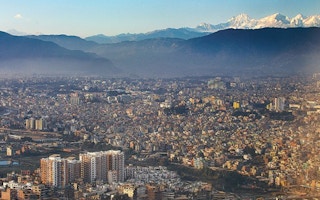Some 95 per cent of Covid-19 cases have come from urban areas. Pandemic preparedness in cities and towns is more urgent than ever for reducing disaster risk, particularly in challenging situations where disease outbreaks could coincide with an extreme weather event.
The eastern Indian city of Kolkata has been devastated by Cyclone Amphan, which caused many deaths and left millions without electric power. Fear of contracting the virus made it impossible to use cyclone shelters to their maximum capacity. Covid-19 restrictions made evacuations more difficult.
Countries around the world were caught by surprise by the Covid-19 pandemic despite many warnings and recent experience of epidemics such as Severe Acute Respiratory Syndrome (SARS), which spread through urban centres including Hong Kong and Toronto.
“
It is now an urgent requirement for cities and towns to develop a deep understanding of their risks from future pandemics, just as they would for other more visible hazards like extreme weather events.
These recent experiences and others, such as the Ebola outbreak, have led some countries to be better prepared. But generally, there is a lack of planning for hazards and disasters at all levels.
The frustrating shortages of personal protective equipment, ethanol for disinfectant and other emergency supplies could have been avoided if there had been adequate scenario-planning at the national level, supported by the allocation of required resources to local governments.
The Covid-19 crisis exposes systemic vulnerabilities in healthcare systems that cannot handle surging caseloads. Likewise, cities have been forced to confront the fact that unplanned urbanisation creates conditions where many of their residents lack adequate water and sanitation facilities, while living in overcrowded places where physical distancing is challenging.
It is now an urgent requirement for cities and towns to develop a deep understanding of their risks from future pandemics, just as they would for other more visible hazards like extreme weather events.
New metrics
Governments, especially at the local level, need to plan and strategise to deal with all hazards, including biological ones, and to address gaps in their preparedness and develop response capacity. This will prevent them being taken by surprise, and then overwhelmed.
Better data collection will allow city leaders to prepare for future episodes where once unthinkable metrics become normal, such as whether a park can accommodate neighbourhood residents if they must keep two metres apart.
There is an existing framework to manage disaster risk. Over 200 cities and towns around the world already use the United Nations Disaster Risk Reduction (UNDRR) Disaster Resilience Scorecard to develop evidence-based approaches to managing their disaster risk.
The Scorecard has been augmented by the development of a Public Health Addendum which provides guidance to local governments on the wider issues of management and recovery in case of biological hazards, including a pandemic. The Addendum to the Scorecard is designed to help cities establish their public-health system resilience baseline and to frame an action plan. It will soon be available as an online course.
In cities like Lisbon, Kampala and Greater Manchester, the Disaster Resilience Scorecard has proved to be a useful tool helping cities to establish their public-health system resilience baseline and to frame an action plan. Likewise, UN-Habitat’s City Resilience Global Programme provides hands-on support to local governments in urban planning and building resilience to all types of hazards.
Global campaign
These UN agencies and other partners like the World Bank Group saw the need to prepare for risks like climate change, disease outbreaks, pollution, waste management, land use and building codes when they launched the Making Cities Resilient (MCR) campaign 10 years ago. The campaign has since attracted 4,300 cities and towns to sign up, creating a global network of local governments keenly aware of the need to reduce disaster risk.
Now, UNDRR, UN-Habitat, the World Bank Group and other partners are joining forces to elevate the campaign’s focus from advocacy to implementation over the next decade. New partners willing to work together for urban resilience are invited to join.
The successor campaign, MCR2030, will launch towards the end of this year and pandemic preparedness will be a priority area of focus for all participants, including local governments and municipalities, over the next decade.
The focus is on cities because, while they can be disease vectors, it is also clear that sustainable urbanisation creates social, economic and environmental prosperity—which can be an important bulwark against the spread of disease.
It is a hopeful sign that some of the world’s most urbanised countries are responding with relative success to the Covid-19 pandemic.
South Korea, where over 80 per cent of citizens live in cities and towns, applied lessons learned from its experience with Middle East Respiratory Syndrome (MERS) in 2015. It has managed to fight the outbreak using technology, open communication, rigorous testing and tracing, and excellent hospital care.
Covid-19, like most epidemics, is largely an urban problem. Local strategies for disaster risk reduction must include pandemic preparedness as a priority, and this needs to be part of the process of better recovery and building resilience to future disease outbreaks.
Mami Mizutori is the UN Secretary-General’s Special Representative for Disaster Risk Reduction and head of the UN Office for Disaster Risk Reduction. Maimunah Mohd Sharif is UN Under-Secretary-General and Executive Director of UN-Habitat.
This story was published with permission from Thomson Reuters Foundation, the charitable arm of Thomson Reuters, that covers humanitarian news, climate change, resilience, women’s rights, trafficking and property rights. Visit http://news.trust.org/climate.
















